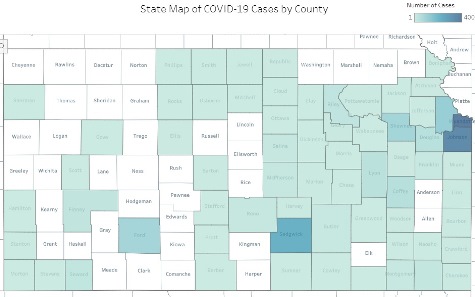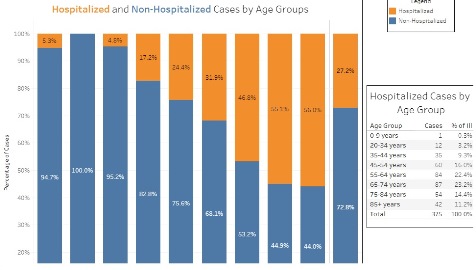

Gov. Laura Kelly today announced a “Hero Relief” program to expand child care assistance subsidies for families and provide financial support to child care providers.
Health care workers, first responders and other essential workers could receive child care subsidies beginning Monday, April 20.
In addition, child care providers could receive several stipends and grants for providing child care.
“We know these essential workers are risking their health every day to protect others,” Gov. Kelly said. “The Hero Relief Program is our way of saying ‘we’ve got your back’ by making sure families have access to quality affordable child care.”
Those who could receive child care subsidies would include health care workers, first responders in public safety, food and agriculture workers, judicial branch workers, the National Guard, child and adult protective service specialists and child care providers caring for children of eligible workers, according to the Department of Children and Families. Those whose gross income is at or below 250 percent of the federal poverty level could qualify. For example, a family of four that has a monthly income of $5,458 or less could qualify.
Kansas today saw an increase of positive COVID-19 cases, up 117 from Thursday for a total of 1,705. There were four more deaths in the state, for a total of 84, according to Kansas Department of Health and Environment statistics. Sixty-six of 105 counties had positive COVID-19 cases.
The Wyandotte County positive COVID-19 numbers were approaching 400 on Friday. There were a total 35 COVID-19 deaths reported in Wyandotte County. The 4:30 p.m. Friday UG COVID-19 page report stated there were 380 positive cases in Wyandotte County.
Gov. Kelly said during a news conference at 2 p.m. that she had signed another temporary executive order, 20-25, that further clarifies an older order on mass gatherings. The order is for 10 or fewer persons, who must be spaced 6 feet apart. The order narrows and better defines exemptions, she said, for restaurants, office spaces and grocery stores.
Gov. Kelly said the new order makes it clear that there have to be 10 or fewer people at a place, and they also have to be spaced 6 feet apart.
She said the limitations on mass gatherings are temporary, and her administration is working on a plan to reopen society as soon as possible. She said she has spoken with the White House, and is working with the state’s health and emergency team to get residents back to work as soon as possible.
She also said she was aware of lawsuits filed on behalf of churches that are challenging the order prohibiting gatherings. Gov Kelly said the executive order had nothing to do with religious freeom and everything to do with protecting the health and safety of Kansans.
Between now and May 3, the expiration date of the stay-at-home order, the state is working on a plan to reopen, most likely on a regional basis, she said. When the state order is lifted, local communities may decide whether or not to extend their own stay-at-home orders, she said. She added that if health conditions warrant, the state might have to extend its stay-at-home order.
Gov. Kelly said she was working with public health and emergency management agencies, and also the business world, to make a plan for reopening. She said she expected to have a plan late next week or the following week, with very clear guidelines.
The state’s ability to test and contact trace must be more robust before the state could safely reopen, she said. Gov. Kelly said she has been talking about the need for more testing and testing equipment for a long time, and the state has asked for more assistance from the federal government. Kansas has had to come up with some of its own solutions, she added. She said she pushed hard for Kansas to get its fair share of the tests.
Dr Lee Norman, Kansas secretary of health, said that some of the tests and supplies that should have been sent to Kansas were redirected to other, more populous states.
With the testing comes a need for more personal protective equipment, Gov. Kelly added. The state also needs more test kits, she said. She said she agreed with the president’s statement that more testing was needed, and she looked forward to his help in getting Kansas there.
Dr. Norman said 3D printing has begun and next week he anticipated they would have 10,000 swabs a week to do the testing. Some of these are being produced by dental offices.
Dr Norman said he estimated 15,500 tests would determine the prevalence of the spread of COVID-19 throughout Kansas. The testing will include nonsymptomatic people.
He said they expect that 30 to 40 percent of the asymptomatic cases are positive, which is what other studies have found.
COVID-19 is expected to reach a peak in Kansas in late April, Dr. Norman said. He said it is quite likely to have a resurgence of COVID-19 in the fall and winter, and the state needs to make sure it has enough ventilators. He said there should be some weeks after the peak, with a reduction of new cases, before any reopening.
Dr. Norman said the KDHE is currently monitoring 35 clusters statewide, an increase of nine from Wednesday. The nine are all in private companies, he said. The clusters include 13 long-term care centers, two group living sites, 13 in private companies, Lansing Correctional Facility, a hospital and five religious gatherings.
Lansing Correctional Facility currently has 65 confirmed cases, and six patients have recovered completely, he said.
To view the governor’s news conference, visit https://www.facebook.com/GovLauraKelly/.
For more information on the Hero Relief program, visit http://www.dcf.ks.gov/Newsroom/Pages/HeroReliefProgram.aspx.
The Kansas COVID-19 resource page is at https://govstatus.egov.com/coronavirus.
The UG’s COVID-19 webpage is at https://alpha.wycokck.org/Coronavirus-COVID-19-Information.
